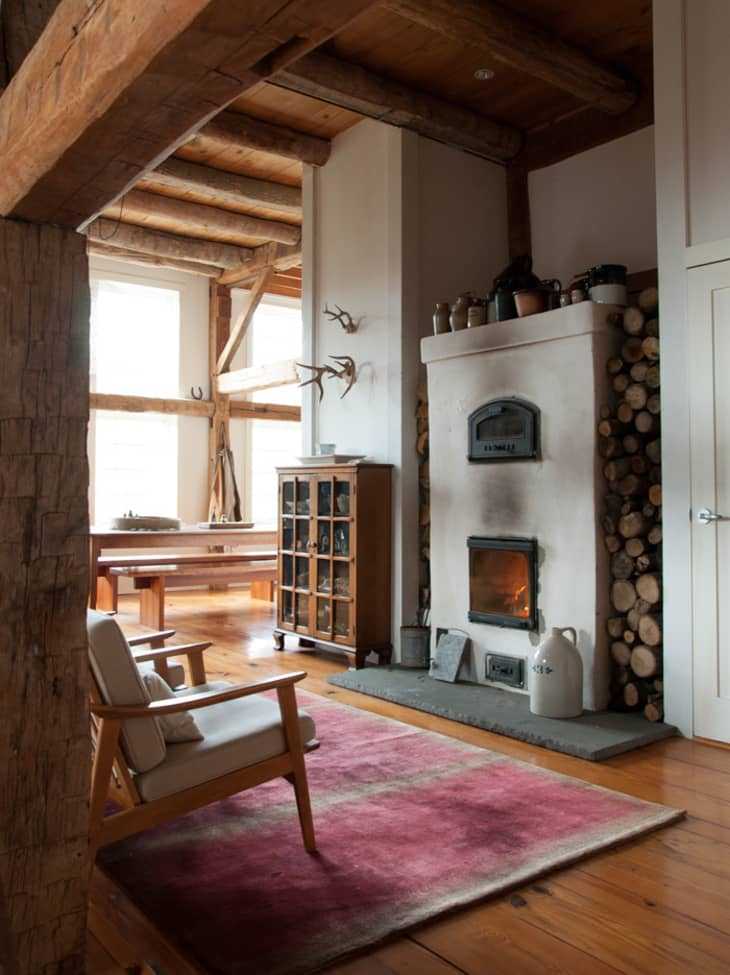This Non-Traditional Hardwood Floor is On the Rise
Here’s a non-traditional hardwood floor that deserves a second look: wide planks. These beautifully crafted floors really evoke a sense of warmth and old-world charm, and make your room look larger, more open and less crowded. When the outside world feels complicated, unpredictable — and sometimes downright unsafe — creating a warm, authentic environment at home seems more important than ever. As trends go, this one has weight and longevity.
A good hardwood floor can be expensive, but there is nothing nicer than walking into a home with the warmth and beauty of wood underfoot. An investment today will yield decades of pleasure. Here’s a little glimpse of some wide plank floors done right, and a few things to consider before choosing this type of floor:

Striking a balance between old and new, Bill renovated his barn into cozy living space over the course of eight years, and shared it on Design Sponge . Using milled cherrywood for the floors — and a combination of both wide and narrow planks — he created a timeless look.
Appearance: Wide planks generally start around 5″ wide and usually go up to 10-12″, although wider is possible. Because they are cut from the heart of the trunk, they are also usually longer than cheaper narrower planks as well, which are cut from various parts of the tree and can wind up as short as one foot. The greater width and length of wide planks ensures there are fewer seams and gaps between pieces, which really allows you to see the color and grain of the wood itself. Of course, this also means you’ll see more knots and natural variances in the wood.
One of our favorite examples of wide plank floors came from Grace Bonney’s own kitchen . Wide pine planks give a classic feeling of old fashioned hygge and compliment the more modern amenities. You just cannot go wrong with this style of flooring: it goes with everything.
Quality and Longevity: All wood floors shrink and contract, but wide planks are more prone to warping and cupping than their narrower cousins. If you live in an area where humidity fluctuates widely, this might not be the best option for you. If you do move ahead, do not skimp on quality flooring: properly milled and dried wood won’t move as dramatically, so choose a reputable company that guarantees the quality and endurance of their product. Even with proper drying and installation, you will most likely see a slight change in floor board width with natural contraction (in winter) and expansion (in warmer months).
How about going au natural? Simplicity is a thing of beauty when carefully chosen pieces complement your wide plank floor. Liz Marie’s blog used 8-inch pine boards, with large nail heads for detail, in her 1800s farmhouse renovation.
Installation: Because wider planks come with special circumstances, we recommend hiring a pro to install your new floors — preferably one that has experience with this type of flooring. Depending on what type of floor you buy, they’ll be able to advise you on the right subfloor needed, installation technique, and properly acclimate the wood —all to minimize the movement mentioned above. One major advantage of wide plank flooring is that, since each piece covers more surface area, you need fewer pieces to cover your floor — a major time saver during installation.
The wide planks in this home from Planete Deco are laid diagonally, which gives the floor a slightly more modern vibe, combining rustic wood with a fresh installation.
What do you think? Would you consider wide plank flooring in your home?